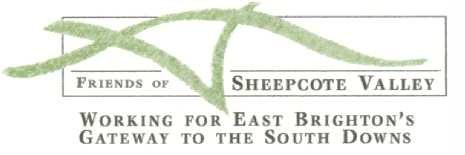|
|
 |
|||||
|
BACK to Sheep |
|||||
|
South Downs Local Grazing Scheme WHY GRAZE? Why not just leave the reserves to their own devises and let nature take its course? Chalk grassland has evolved as nature's response to hundreds of years of grazing on poor soils. Historical grazing prevented any one species of plant from growing rapidly and dominating the grassland. This resulted in an incredible diversity of plants; up to 50 different species per square metre. Regular grazing is needed to maintain this balance, without it rougher grasses and then scrub will gradually take over pushing out the delicate flowers, insects and birds that depend on them, reducing the grasslands diversity and the public enjoyment of the sites, What is so special about chalk grassland? Many reserves have been mown in the past, why can't this just continue? Most sites are split up and generally only one compartment is grazed at any one time with grazing taking place for a few weeks or months on each compartment Grazing docs not normally take place during the flowering season in spring and summer when most visitors are also expected. Can I still walk my dogs when animals are grazing? Yes, when grazing animals are on the site dogs need to be kept under close control, this is often required anyway under local bylaws. On access land declared under the CROW act dogs have to be on a fixed lead of no more than two metres when in the vicinity- of livestock. Will Public access be affected? Access within grazed sites is usually not restricted. Sites remain open and accessible to the public at all times. Any permanent or temporary fencing is carefully sited, with gates at regular intervals, popular dog walking routes are often left untouched, outside the fence Will grazing animals turn the reserves into muggy quagmires? The minor disturbance and bare ground caused by animal hooves aids seed germination and creates hot spots beneficial to many insects, especially butterflies. During prolonged wet weather the animals can be moved off if poaching becomes excessive. On some sites the Council can fine dog walkers for not cleaning up their dog mess, but grazing animals also leave droppings. Why is this acceptable? Dog mess poses serious health hazards including Toxocara that can cause blindness it is often made up of meat residues that cause nutrient enrichment and this is harmful to chalk grassland and of little benefit to wildlife. Grazing animal dung is primarily made up of vegetation residue it has a net negative nutrient input (maintaining the low nutrient balance needed on chalk grassland). This type of dung is extremely beneficial to many invertebrates, for example, one cow pat is used by around 1000 different invertebrate species. Why does a grazier have to be paid to graze some sites and on others they pay to be able to graze? Some sites can be a benefit to a farmer and may rent their grazing,
Others sites are too small and complicated to attract a grazier and may pay for a grazing service.
FOR FURTHER INFORMATION PLEASE CONTACT THE SOUTH DOWNS LOCAL GRAZING SCHEME ON 01273 625242 |
|||
|
BACK to Sheep |
|||